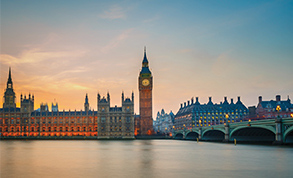Election watch – week four
The Conservatives launched their plan for government on Sunday, restating the five-year funding settlement for the NHS in England and making some eye-catching promises on the health workforce.
It said additional funding would be found for 50,000 more nurses and 6,000 extra doctors over five years. It soon became clear that the nursing promise was based on a mix of training 19,000 new nurses – including 5,000 via apprenticeships – but also retaining staff who might otherwise have left the service, and recruitment from overseas.
Labour and the Liberal Democrats have pledged to reinstate the student nurse bursary if elected, and the Tories said they would introduce a maintenance grant of between £5,000 and £8,000 a year. Tuition fees would remain. Staff morale would be improved by funding for professional development and ‘more supportive hospital management’.
The other parties have committed to increasing nurse and doctor numbers. But workforce data issued by NHS Digital this week shows, on a full-time equivalent basis, there were more than 43,500 nursing vacancies and 9,300 vacant medical posts across England at the end of September.
Though Boris Johnson’s manifesto is unequivocal about the NHS not being on the table in post-Brexit trade talks between the UK and the United States, Labour hit back. Jeremy Corbyn published documents that he said documented secret discussions between the countries. The documents proved that the NHS was on the table, he said, not only pushing up the price of drugs through longer patents, but also by allowing access to the market for services.
Though health is a devolved responsibility, the SNP’s manifesto came out strongly against any plans to include the NHS in a future trade deal. It would propose an NHS protection act to ensure ‘trade deals will not undermine the founding principles of the NHS, nor open it to profit driven exploitation’.
The manifesto also called on the next UK government to increase funding for Scotland by matching the Scottish per capita NHS spending. It said spending on frontline services per head in Scotland is £136 (6.3%) higher than in England, amounting to £740m more spending in Scotland compared to the UK as a whole. Closing this gap would increase spending in England, but also frontline investment in Scotland to more than £17bn by 2024/25 – under current Scottish government plans it is due to increase to more than £15bn by 2021/22.
The Institute for Fiscal Studies poked holes in both major parties’ manifesto commitments. It said Conservative public spending plans would have looked modest if contained in a Budget, while the lack of a social care plan was the biggest omission. The increase in day-to-day health spending would average 3.3% between 2019/20 and 2023/24. While Labour – and the Lib Dems – had published spending plans across all areas of health, such as capital, public health and training, as well as frontline spending, the Conservatives’ plans failed to set out complete spending over the next four years. Overall, the Conservatives would oversee a 3.1% a year increase in Department of Health and Social Care spending between 2019/20 and 2023/24, the IFS added.
While Labour’s plans were more ambitious, there were risks with its proposed spending increases and tax rises, the IFS said. It said the party would increase NHS spending by an average of 3.8% a year between 2019/20 and 2023/24 – overall Department spending would increase by an average 4.3% a year.
The plan to scrap prescription charges in England would benefit 11% of the population who currently pay the fee – this section of the population is predominantly working-age people with reasonable financial means and who are not chronically sick, the IFS said.
Related content
We are excited to bring you a fun packed Eastern Branch Conference in 2025 over three days.
This event is for those that will benefit from an overview of costing in the NHS or those new to costing and will cover why we cost and the processes.